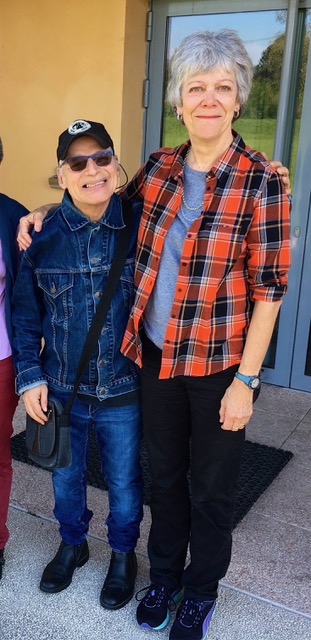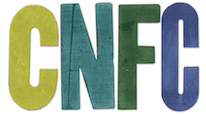The Road to a Book, Part One
Meet Beth Kaplan, a member of the CNCF Board and Conference/Programming committee . A graduate of UBC’s MFA program, Beth teaches memoir and personal essay writing at Ryerson University and the University of Toronto, where in 2012 she was awarded an Excellence in Teaching award. Recently Beth shared with us a three-part series of essays focused on the writing and publishing of her new memoir, which was released September 9, 2020. We’re certain our members will empathize with her trials and learn from her experiences.
—————————
I started writing my second memoir Loose Woman: my odyssey from lost to found in 2014, really got into it the following year, did countless drafts and, though I work as an editor myself, paid for three editors. I spent two days reading a 78,000-word draft aloud to a friend and sent other drafts to many readers, including a few who don’t know me, because my enthusiastic friends are surely biased. As a last step, I paid nearly $1000 for a complete copy-edit. All to get it ready for its voyage out into the reading world.
But I knew that finishing a book and starting to look for a publisher is like climbing a mountain and arriving, grimy and exhausted, at the top, to find a long dark corridor of closed doors.
Why did I write Loose Woman? In the spring of 1979, I was a successful if quasi-alcoholic and floundering 28-year-old Vancouver actress who embarked on what was meant to be a short trip to Europe. To my surprise I ended up spending over four months living and working at a community home for handicapped men in Provence. The experience was so powerful and moving that when I returned home, I felt like a different person. By mid-1980 I’d changed my life completely, on my way to becoming a writer, a wife, and a mother. I thought this astonishing, cataclysmic year would make a compelling narrative.
Luckily, I’ve kept a diary since childhood, and my mother saved many of my missives to her; as I began to flesh out a story that had taken place more than thirty-five years before, I could dig out journals and letters to provide details. I travelled to France to revisit the community and interviewed friends, family, and former colleagues. My editors helped me shape and structure the narrative, cutting here, going deeper and longer there. I received a ton of feedback, made changes, rewrote. By the fall of 2017, I thought this mama should consider pushing her baby out.

My return to visit the L’Arche community in Provence – with my old friend Jean-Claude.
I’d been at this stage of the publishing journey before. My first book, begun as an MFA thesis in 1982, was the biography of a once-famous Yiddish-American playwright who happens to be my great-grandfather. Writing it took over two decades because I was a single mother beginning a career teaching nonfiction writing; also because most of the relevant materials were in New York and in Yiddish, and the book was begun B.I. — before the internet. Research required those archaic instruments: the letter, the telephone, the airplane.
At last, the manuscript was ready. A New York agent loved the book, but my excited hopes were smashed when after six months, he couldn’t sell it to mainstream publishers. I sent it to university presses and after a long, discouraging process, one accepted it. In 2007, they produced a beautiful hardcover but provided no marketing. The book, though I’m proud of it and readers have said flattering things, and a paperback was issued five years later, never found a wide audience.
With my next two books (a memoir of the sixties and a guide to writing memoir), I decided not to waste time trying to find an agent or a publishing house and approached a hybrid publisher. In 2014, self-publishing wasn’t as streamlined as it is now, and also I’m not tech savvy; instead of taking the cheaper route of doing it all myself, I wanted a professional to hold my hand. (Hybrid means publishing professionals guide the process that the writer pays for.) My publisher, who’d been in the profession for many years, did a thorough final edit, helped with cover images, got me the ISBN and made sure the memoir got into libraries.
It cost me thousands of dollars for his work, for editing and distribution. I organized two big book launches and did my best to arrange speaking events and publicity. But marketing, to say the least, is not my strong point. Newspapers then would not review self-published books, so lots of imagination and effort were needed to get the word out. I hired a young publicity assistant for a brief time, but her well-meaning advice led to dead ends for me. She organized a giveaway on Goodreads, but I did not want to spend hours chatting with readers there. Though I already had a website and a blog, I wasn’t comfortable with the notion of tweeting or posting endlessly about myself. You can only do what you’re comfortable with, and I think few people my age are as fluent on social media as those who came of age with these sites. Though God knows, we should do our best to learn.
The few reviews of both books on Goodreads and Amazon are all four or five star, but the memoir has not done more than make back my investment. The writing book, on the other hand, has done well enough; it’s a practical, concise how-to book that my students buy. How-to book are much easier to sell.
This time, with the new memoir about my big year of change, I really wanted what they call a legacy press — a real publisher — partly for the prestige, yes, but mostly for the marketing department. Publishers have a publicity team, in my fantasy a roomful of experts eager to guarantee a big readership. A team behind my book! After all, I’m not a neophyte in the Canadian literary world; I’ve had scores of essays in newspapers and magazines and on CBC Radio (though not recently), published three books, taught at two universities for decades, and I’m on the board of the CNFC. Surely that’s nearly Canadian literary fame!
Surely those doors would open.
To be continued …
For more information about Beth and her book, visit her website and blog at bethkaplan.ca.
